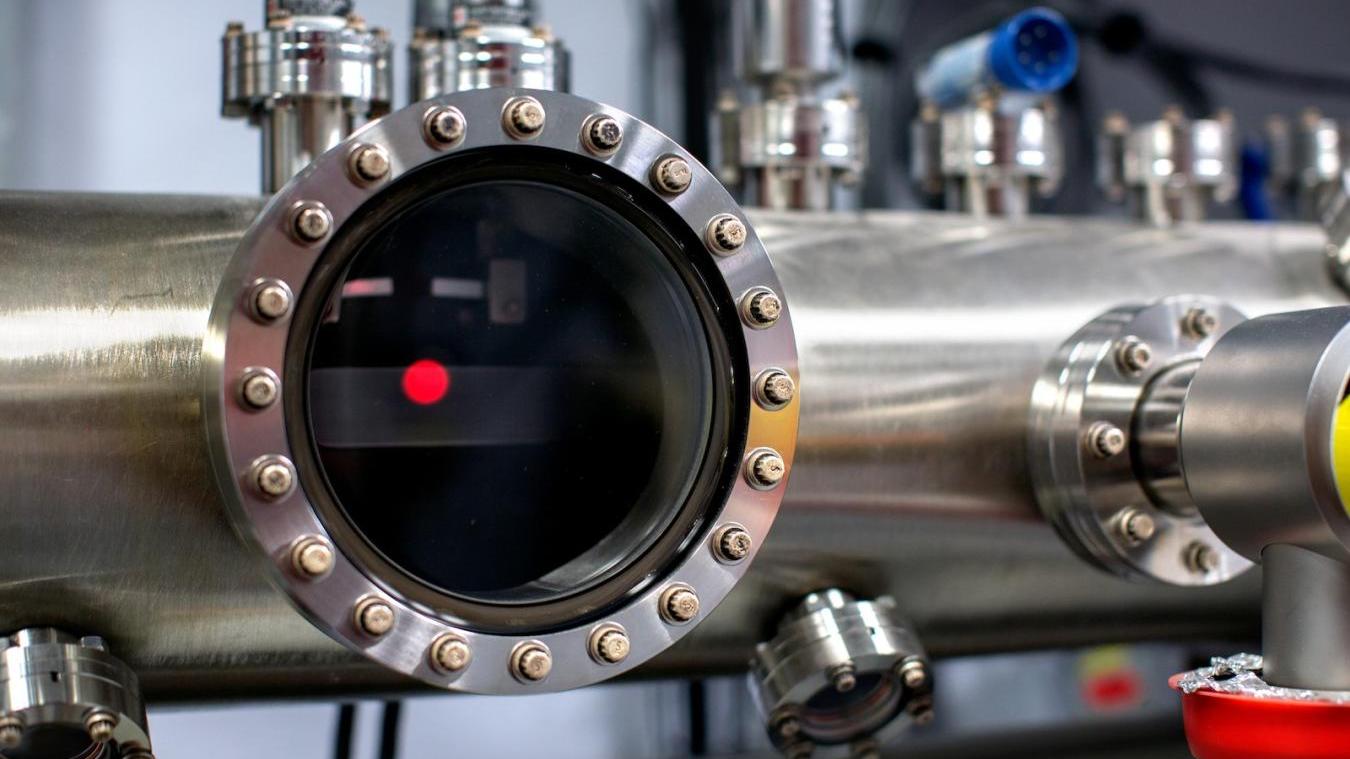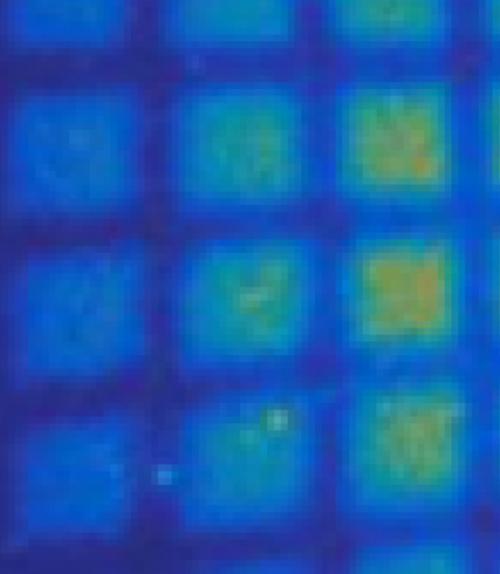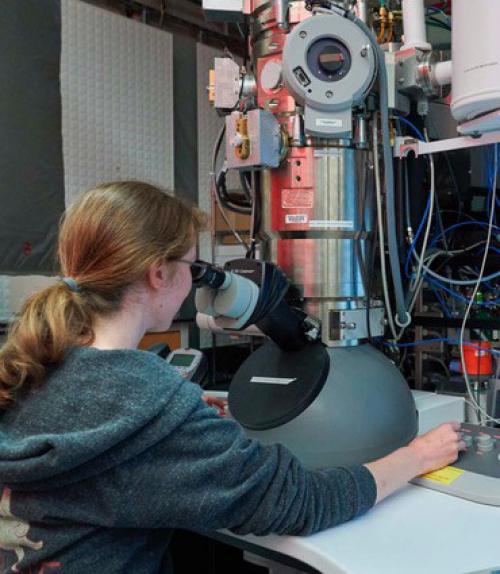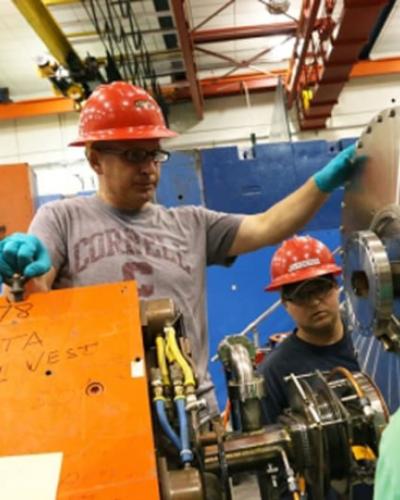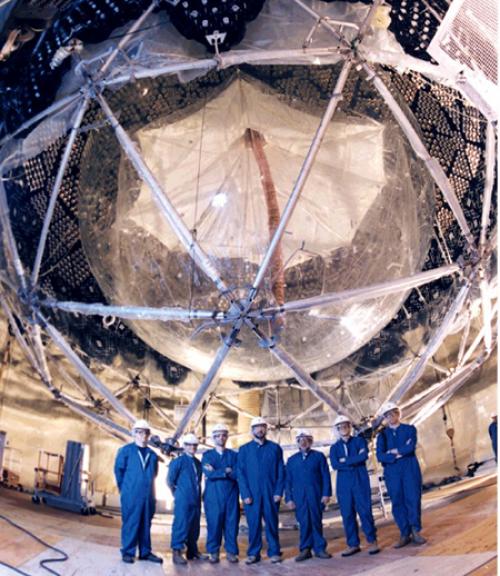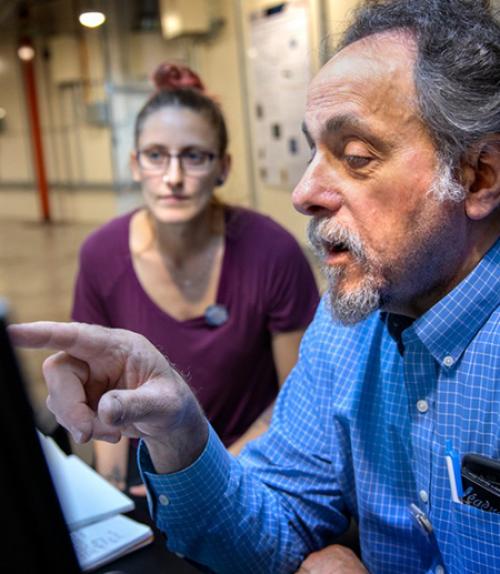
The strength of the Department is complemented by eight major research facilities:
Cornell Laboratory of Atomic and Solid State (LASSP)
Visit the LASSP website for more information.
Cornell Electron Storage Ring (CESR)
The CESR accelerator circulates beams of electrons and positrons with energies from 1.8 to 5.3 GeV. Commissioned as a colliding beam machine in 1979, CESR was the source of e+e- collisions for the CLEO particle physics experiment until CLEO data-taking was completed in 2008. The focus is now on accelerator physics experiments, and on providing beams for x-ray science. For the accelerator experiments, CESR has been reconfigured for the study of the properties of tightly collimated (”low emittance”) beams. Such beams will be required by the International Linear Collider, a future high energy e+e- collider — but to date, no accelerator facility has achieved beams of the necessary quality. The CESR Test Accelerator Project is developing techniques for achieving ultra-low emittance and exploring the physics of beams in the ultra-low emittance regime. CESR is the only facility in the western hemisphere that routinely produces, accelerates and stores beams of both electrons and positrons and is therefore uniquely suited to the study of damping ring physics. Visit the CESR website.
Cornell High Energy Synchrotron Source (CHESS)
CHESS provides high-intensity x-rays to both a national user community and researchers at Cornell for use in determining the structure and dynamics of materials in a wide range of scientific fields. X-ray diffraction is used to understand the growth modes of metal thin films used for making electronic devices, the defects in protein crystals, the motion of charge-density waves in quasi-1-dimensional metals and the dynamics by which polymer materials self-assemble into controlled structures. New regimes of study are being opened with the development of high-speed area detectors for measuring time-dependent phenomena with x-rays, as well as entirely new sources of more brilliant x-rays. Visit the CHESS website.
Cornell Laboratory for Accelerator-based Sciences and Education (CLASSE)
CLASSE provides facilities for experimental particle physics and accelerator physics. These facilities include clean rooms and cryogenic tools for the fabrication and characterization of superconducting RF cavities and other large instruments. There are also facilities for computing and for software development for large, widely distributed data sets, such as those anticipated at the energy-frontier LHC particle accelerator. Visit the CLASSE website.
Cornell Center for Materials Research (CCMR)
The Center for Materials Research supports interdisciplinary projects that include such themes as: controlling electrons at interfaces, photonic building blocks from multiscale materials, growth of complex materials and atomic membranes as molecular interfaces. Its Materials Laboratory is equipped with thin film deposition equipment (e-beam, laser ablation, etc.),STM/AFM microscopes and optical/infrared spectrometers. The center also supports an Ion Beam Analytical Facility, UHV STEM Laboratory, X-Ray Diffraction, Polymer Characterization and Research Computing Facilities.. Visit the CCMR website.
Nanobiotechnology Center (NBTC)
The Nanobiotechnology Center (NBTC) manages shared research facilities that are available to all researchers. The facilities promote interdisciplinary research by offering equipment, capabilities and training. Visit the NBTC website.
Cornell NanoScale Science & Technology Facility (CNF)
CNF is a national center for fabrication of micro- and nanostructures for applications throughout all of science and engineering. Here, physicists and other scientists, engineers and expert technicians make devices of metals, semiconductors and insulators of dimensions measured in nanometers. Fabrication techniques include the most advanced methods of thin film processing, electron beam and optical lithography, etching, film deposition and characterization. Visit the CNF website.
Cornell University Center for Advanced Computing (CAC)
The CAC helps faculty and graduate student researchers accelerate scientific discoveries with high-performance computing, application and data storage solutions. CAC enables simulations of complex materials, relativistic quantum field theories, black holes and galaxy formation, high-energy particle accelerators and the analysis of data from the Large Hadron Collider at CERN. Visit the Cornell CAC website.
The Kavli Institute at Cornell for Nanoscale Science (KIC)
KIC is devoted to the development and utilization of next-generation tools for exploring the nanoscale world. This Institute supports high-risk, high-payoff projects to image and dynamically control nanoscale systems and push the frontiers of nanoscale science. Current emphasis focuses on electron and optical microscopy, physical and electronic measurement and manipulation, and optoelectronic nanosensing.

